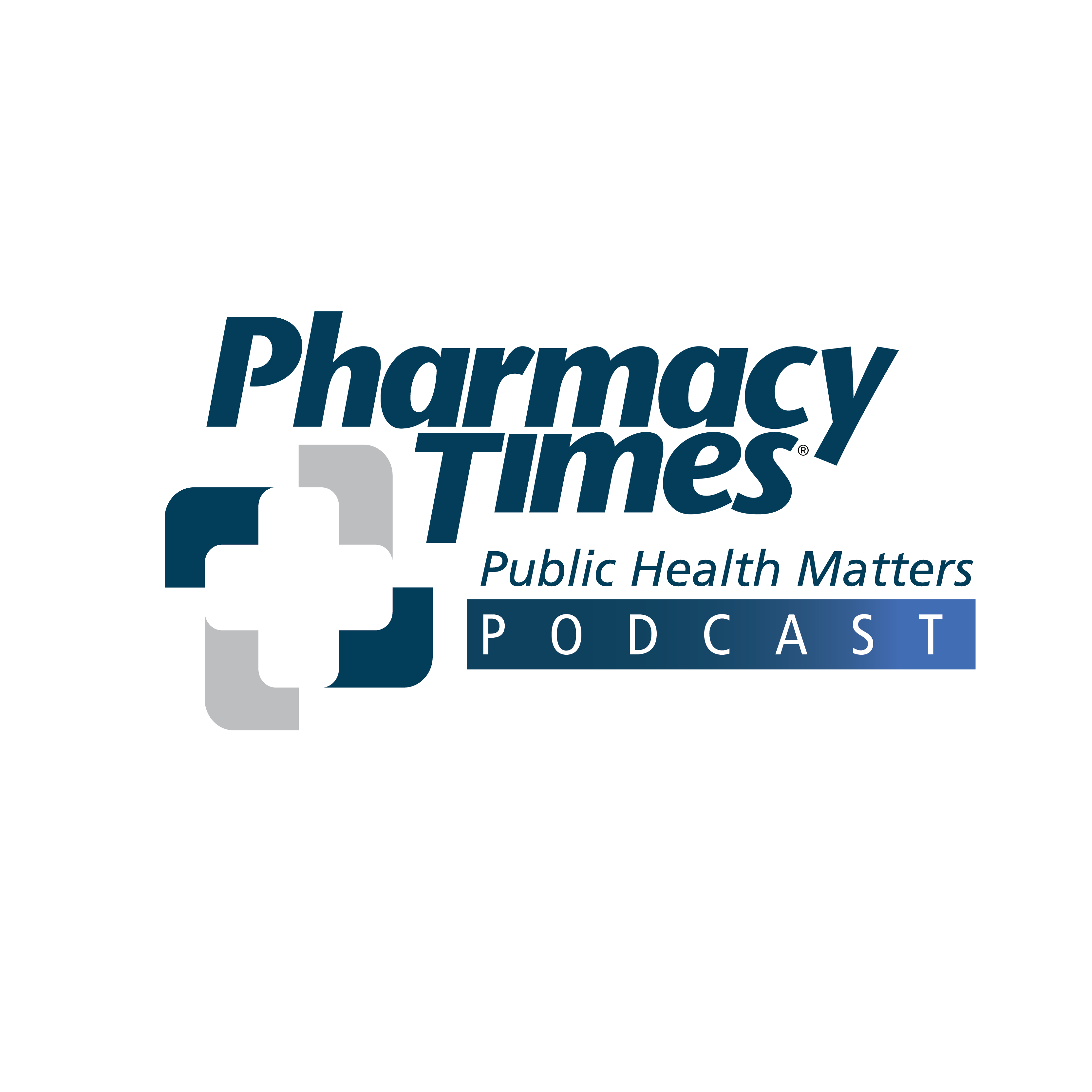With continuously rising rates of antimicrobial resistance, establishing robust antimicrobial stewardship programs (ASPs) is becoming increasingly important.1 Antimicrobial stewardship promotes appropriate antibiotic use, including optimization of drug selection, dose, duration, and route of administration.2 Outpatient antimicrobial use has been particularly problematic, with approximately half of outpatient antimicrobials considered to be misprescribed.3 Interest in the development of an outpatient ASP has grown in recent years with the expansion of The Joint Commission stewardship requirements extending to the ambulatory care setting in 2020.4 Although many institutions have well-established inpatient ASPs, these services are more difficult to establish in the outpatient setting, with less than 10% of institutions reported to have a fully functioning outpatient ASP.5 In this article, we will review the CDC’s 4 core elements of outpatient antimicrobial stewardship for developing an outpatient ASP.
Establishing an Outpatient ASP
Commitment
An initial step of establishing an outpatient ASP involves identifying leadership that is consistent with the CDC core element, commitment.6 As with many inpatient ASPs, outpatient ASP leadership often consists of a physician and/or pharmacist with infectious diseases (ID) specialty training, with a caveat that this may not be practical in all settings. For facilities without specific ID clinicians, several training programs have been developed to enhance additional skills needed to lead an ASP.7 Other important members of the outpatient ASP team may include microbiologists, clinic managers, nurses, frontline clinicians, and information technology (IT) support.8 Because an outpatient ASP encompasses a variety of outpatient settings (eg, emergency departments, long-term care facilities, urgent care centers, outpatient clinics), selecting appropriate stakeholders representing each setting of focus is an important consideration.
To help prioritize the commitment to ASP, several personalized approaches, such as including ASP duties in job evaluation criteria or job descriptions, are valuable options to be considered, alongside an additional consideration of promoting ASP support in public settings. In a study including 5 primary care clinics, the use of public-facing commitment posters in support of ASP was associated with an absolute 19.7% reduction in rates of inappropriate antimicrobial prescribing for acute respiratory infections.9
Action for Policy and Practice
Another important aspect of creating an outpatient ASP is identifying effective interventions to improve antimicrobial prescribing. A variety of successful outpatient stewardship interventions have been described in the literature, including creation of institutional guidelines, electronic medical record modifications encouraging accountable justification, and incorporation of clinical decision support.6 Because it can be overwhelming to figure out which intervention(s) to start with, outpatient ASPs may opt to start with an assessment of current prescribing practices to identify key locations or disease states that would be ideal pilot areas.
For centers newly beginning an outpatient ASP, antimicrobial review during transitions of care (eg, hospital discharge) has been shown to be a high impact area to evaluate outcomes, such as durations of therapy.10 Once a program is established, many facilities opt to employ an approach incorporating several strategies. One tertiary care center was able to show an increase in appropriateness of antimicrobial prescribing and a decrease in monthly antimicrobial prescriptions through the use of a multifaceted approach that included provider education, pocket guide creation, antimicrobial order sets, monthly provider prescribing reports, and weekly postprescription reviews and feedback.11
Tracking and Reporting
Tracking and reporting assesses the impact of stewardship initiatives on antimicrobial prescribing and in turn can reveal additional areas for needed changes. Also referred to as audit and feedback, this process can occur either at the individual clinician level or at the facility level, although the former has been shown to be especially effective and is recommended by the CDC.12 Per the CDC, manual (eg, chart reviews) and automated (eg, software-generated reports, benchmark data) approaches can be used to support this strategy.12 Additionally, partnering with IT personnel is key to establishing an efficient tracking system. Once a viable tracking system is built, it is strongly encouraged to routinely share the antimicrobial prescribing data at the clinician level, as this method has been shown to be effective in reducing unnecessary antimicrobial prescribing.13-15 Another strategy is to prioritize common outpatient indications for antimicrobials, such as for acute bronchitis, to provide more targeted feedback to the outpatient clinicians.15
Education and Expertise
Education can target both patients and clinicians. Specifically, educating patients on appropriate antimicrobial use can increase health literacy and patient satisfaction. One example of appropriate education for patients is explaining that viral infections or certain bacterial infections (such as mild ear and sinus infections) do not require antibiotic treatment, and instead providing patients with a contingency plan for when their symptoms do not improve.16 To facilitate patient education, the CDC provides many patient education materials from the Be Antibiotics Aware campaign, which can be provided to patients and caregivers.17
Behavioral change is likely needed to improve antimicrobial prescribing. Development of reeducation programs on appropriate antibiotic prescribing, provision of personalized audit and feedback, and peer comparisons are all effective ways to generate clinician behavior change.18,19 For example, utilizing all 3 approaches in a rural community setting resulted in a 15% decrease in inappropriate prescribing during an influenza season.19
Future Directions and Next Steps
About the Authors
Esther Y. Golnabi, PharmD, BCIDP, is an infectious diseases/stewardship clinical pharmacy specialist at the UT Southwestern Medical Center in Dallas, Texas.
Mandee Noval, PharmD, BCIDP, is an assistant professor in the Department of Practice, Sciences, and Health Outcomes Research at the University of Maryland School of Pharmacy in Baltimore.
Outpatient settings remain an important component of antimicrobial stewardship. The CDC core elements summarized above provide a framework for initiating and improving outpatient stewardship initiatives. Several barriers exist that can make outpatient stewardship especially challenging, such as a lack of a uniform outpatient antimicrobial prescribing tracking system, a disconnect between various points on the continuum of care, and poor financial incentives.20,21
Outpatient ASPs have high potential to improve outcomes. Future systems that help actualize this potential may include an easy-to-access national/regional tracking system, local/regional antibiograms, and government incentives/mandates for ASP. In the meantime, stewardship clinicians are strongly encouraged to learn from other institutions with successful outpatient stewardship approaches and to continue to seek and publish novel approaches to reducing barriers to entry for outpatient antimicrobial stewardship.
References
Fishman N, Patterson P, Saiman L, et al; Society for Healthcare Epidemiology of America, Infectious Diseases Society of America, Pediatric Infectious Diseases Society. Policy statement on antimicrobial stewardship by the Society for Healthcare Epidemiology of America (SHEA), the Infectious Diseases Society of America (IDSA), and the Pediatric Diseases Society (PIDS). Infect Control Hosp Epidemiol. 2012;33(4):322-327. doi:10.1086/665010
Fleming-Dutra KE, Hersh AL, Shapiro DJ, et al. Prevalence of inappropriate antibiotic prescriptions among US ambulatory care visits, 2010-2011. JAMA. 2016;315(17):1864-1873. doi:10.1001/jama.2016.4151
Eudy JL, Pallotta AM, Neuner EA, et al. Antimicrobial stewardship practice in the ambulatory setting from a national cohort. Open Forum Infect Dis. 2020;7(11):ofaa513. doi:10.1093/ofid/ofaa513
Sanchez GV, Fleming-Dutra KE, Roberts RM, Hicks LA. Core elements of outpatient antibiotic stewardship. MMWR Recomm Rep. 2016;65(RR-6):1-12. doi:10.15585/mmwr.rr6506a1
Cosgrove SE, Hermsen ED, Rybak MJ, et al. Guidance for the knowledge and skills required for antimicrobial stewardship leaders. Infect Control Hosp Epidemiol. 2014;35(12):1444-1451. doi:10.1086/678592
Marcelin JR, Chung P, Van Schooneveld TC. Antimicrobial stewardship in the outpatient setting: a review and proposed framework. Infect Control Hosp Epidemiol. 2020;41(7):833-840. doi:10.1017/ice.2020.94
Meeker D, Knight TK, Friedberg MW, et al. Nudging guideline-concordant antibiotic prescribing: a randomized clinical trial. JAMA Intern Med. 2014;174(3):425-431. doi:10.1001/jamainternmed.2013.14191
Dyer AP, Dodds Ashley E, Anderson DJ, et al. Total duration of antimicrobial therapy resulting from inpatient hospitalization. Infect Control Hosp Epidemiol. 2019;40(8):847-854. doi:10.1017/ice.2019.118
Tagashira Y, Goto M, Kondo R, Honda H. Multifaceted intervention for improving antimicrobial prescription at discharge in the emergency department. Infect Control Hosp Epidemiol. 2022;43(1):88-91. doi:10.1017/ice.2020.1436
Schwartz KL, Ivers N, Langford BJ, et al. Effect of antibiotic-prescribing feedback to high-volume primary care physicians on number of antibiotic prescriptions: a randomized clinical trial. JAMA Intern Med. 2021;181(9):1165-1173. doi:10.1001/jamainternmed.2021.2790
Hallsworth M, Chadborn T, Sallis A, et al. Provision of social norm feedback to high prescribers of antibiotics in general practice: a pragmatic national randomised controlled trial. Lancet. 2016;387(10029):1743-1752. doi:10.1016/S0140-6736(16)00215-4
Meeker D, Linder JA, Fox CR, et al. Effect of behavioral interventions on inappropriate antibiotic prescribing among primary care practices: a randomized clinical trial. JAMA. 2016;315(6):562-570. doi:10.1001/jama.2016.0275
Stivers T, Timmermans S. Arriving at no: patient pressure to prescribe antibiotics and physicians’ responses. Soc Sci Med. 2021;290:114007. doi:10.1016/j.socscimed.2021.114007
Patient education and promotional resources. CDC. Updated October 8, 2021. Accessed February 22, 2024.
https://www.cdc.gov/antibiotic-use/materials-references/index.html
Yadav K, Meeker D, Mistry RD, et al. A multifaceted intervention improves prescribing for acute respiratory infection for adults and children in emergency department and urgent care settings. Acad Emerg Med. 2019;26(7):719-731. doi:10.1111/acem.13690
Cummings PL, Alajajian R, May LS, et al. Utilizing behavioral science to improve antibiotic prescribing in rural urgent care settings. Open Forum Infect Dis. 2020;7(7):ofaa174. doi:10.1093/ofid/ofaa174
Sayood S, Durkin MJ. The challenge of outpatient antibiotic stewardship. JAMA Netw Open. 2023;6(5):e2312996. doi:10.1001/jamanetworkopen.2023.12996








